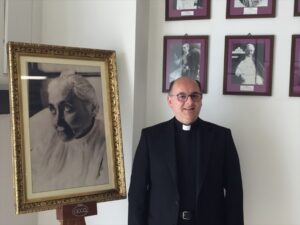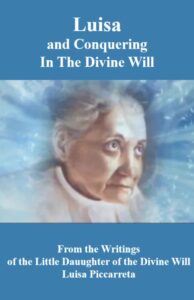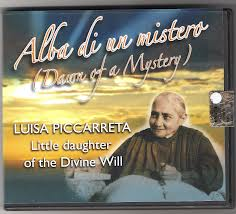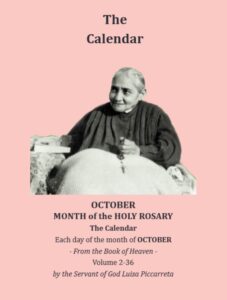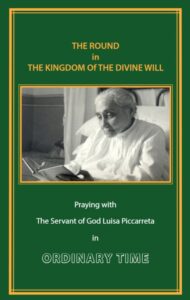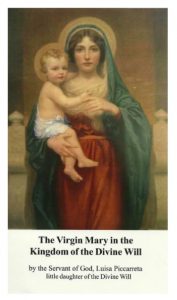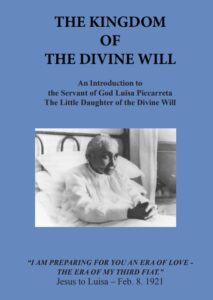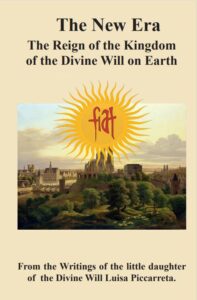The Dignity of the Human Person: Pope John Paul II’s Teaching on Divinization in the Trinitarian Encyclicals
By Carl E. Olson
Originally published in Saint Austin Review in 2002.
A witness to the horrors of Nazism and Communism, Pope John Paul II saw first-hand the physical and spiritual destruction wrought by the disordered desire to remove God and make man the center and meaning of history. He has also observed destructive impulses in the West, falsehoods evidenced by the steady growth of abortion, contraception, amorality, and hedonism during the past several decades. In addressing all of these conditions, the Holy Father has consistently pointed out that man, in his confused search for identity and meaning, unwittingly proves he does indeed have a purpose and reason for living. The yearning of man, so often realized in distorted and ugly ways, is to be God and to be deified.
John Paul II denounces the many perverted forms this yearning takes, but acknowledges its authentic core. Man has a God-made hole in his being, a deep recess which can only be fulfilled in one Way and by one Person, Jesus Christ. In the Incarnation, God united himself to man, making possible the unthinkable: intimate communion between the creature and the Creator. “This union of Christ with man is in itself a mystery,” the Holy Father states in his first encyclical, Redemptor Hominis, “From the mystery is born ‘the new man,’ called to become a partaker of God’s life, and newly created in Christ for the fullness of grace and truth.” (RH 18.2).
This “partaking” of God’s very life (see 2 Peter 1:4) is the reality of divinization, or deification. In the Eastern Churches it is often called theosis; it is a central focus of Eastern Christian theology and worship. It is also one of the consistent and unifying themes of John Paul II’s thought, appearing often in his important trilogy of Trinitarian encyclicals – Redemptor Hominis, Dives in Misericordia and Dominum et Vivificantem – respectively on the Son, the Father, and the Holy Spirit.
At times acknowledging his debt to Eastern sources, John Paul II writes with profundity and insight about the reality of divinization. In the Trinitarian trilogy (and elsewhere) he addresses four key features of this vital doctrine: divinization, the adoption of man into God’s family, reveals the inherent dignity of man; it is possible only through the central mystery of the Incarnation; the Redemption is the concrete way in which the Incarnate One paved the way for man’s divinization; and the divine grace, given to man is the inner life and love of the Triune God and comes to man through the Mystical Body of Christ, the Church.
God’s Family is For The Person
The anthropological focus of the Holy Father is an essential element of his thought, reflecting his use of the phenomenological method. Man, created in the image of God, has a unique, inherent value. It was always God’s plan that men, despite being creatures, would freely participate in his inner life. In Dominum et Vivificantem John Paul II writes:
[God] has revealed to man that, as the “image and likeness” of his Creator, he is called to participate in truth and love. This participation means a life in union with God, who is”eternal life.” (DeV 37.1)
The dignity and value of humanity is established in Creation, but is fully realized and expressed in the invitation to become a “new creature” in Christ (2 Cor. 5:17). In Redemptor Hominis, the Pope writes,
…we can and must immediately reach and display to the world our unity in proclaiming the mystery of Christ, in revealing the divine dimension and also the human dimension of the Redemption, and in struggling with unwearying perseverance for the dignity that each human being has reached and can continually reach in Christ, namely the dignity of both the grace of divine adoption and the inner truth of humanity… (RH 11.4).
The Holy Father returns to this understanding of dignity many times, using the word with a profound intent. Man’s dignity is not rooted in his temporal existence, but in where he has come from and where he is called to go. This calling is found in the revelation of Christ. In his writings, the Pontiff refers often to a phrase in Gaudium et spes: “Christ, the new Adam, in the very revelation of the mystery of the Father and his love, fully reveals man to himself and brings to light his most high calling” (GS 22, quoted in RH 8.2).
If man had no value in the eyes of God, Christ would not have come and taken on flesh and died. So man’s dignity rests in the Redemption and within the salvific economy man becomes a “new creature”: “In this dimension man finds again the greatness, dignity and value that belong to his humanity. In the mystery of the Redemption man becomes newly ‘expressed’ and, in a way, is newly created” (RH 10.1).
An error common to some theologians and (whether they realize it or not) secular humanists, is a fear the “new creation” brought by Christ involves a destructive or disrespectful attitude towards man’s nature. This can be seen in the classical Protestant notion of “total depravity.” But divine life and grace are not given to destroy man’s nature, but to perfect it, heal it, and bring it to full completion. Sin is destroyed, yet sin is not physical, or even “natural.”
“He who is the ‘image of the invisible God’ (Col 1:15), is himself the perfect man who has restored in the children of Adam that likeness to God which had been disfigured ever since the first sin. Human nature, by the very fact that it was assumed, not absorbed, in him, has been raised in us also to a dignity beyond compare. For, by his Incarnation, he, the Son of God, in a certain way united himself with each man” (GS 22, quotes in RH 8.2).
Yet while each man is united to Christ through the Incarnation, each must decide for himself what to do about the scandal of the Incarnation. God does not force his supernatural life upon man; such an act would obliterate man’s free will, an essential feature of human dignity. The dilemma for each person is this: “Will I enter into the life of Christ or not?” If not, divine life is lost and there is an eternal separation from the Source of life. If man chooses divine life, he is indwelt by the Holy Spirit, and enters into communion with God:
The hidden breath of the divine Spirit enables the human spirit to open in its turn before the saving and sanctifying self-opening of God. Through the gift of grace, which comes from the Holy Spirit, man enters a “new life,” is brought into the supernatural reality of the divine life itself and becomes a “dwelling-place of the Holy Spirit,” a living temple of God…Man lives in and by God… (DeV 58.3).
God became Man to Grant Divine Life
In Redemptor Hominis, John Paul II refers to Christ as the “one who penetrated in a unique, unrepeatable way into the mystery of man and entered his ‘heart’” (RH 8.2). When the mystery of man is met by the mystery of the Incarnation, they become unified: “For, by his Incarnation, he, the Son of God, in a certain way united himself with each man.” The Incarnation is the bridge spanning the gap between man and God. It is the ultimate expression – the final Word – of God’s merciful love.
In Dominum et Vivificantem the Holy Father writes of “God’s salvific self-communication” and “giving” (see DeV 11, 12, 13,14). He states this self-communication gives mankind “the capacity of having a personal relationship with God, as ‘I’ and ‘you,’ and therefore the capacity of having a covenant, which will take place in God’s salvific communication with man…” (DeV 34, see all of 34). This culminates in the Word, whose Incarnate entrance into history “constitutes the climax of this giving, this divine self-communication” (DeV 50.1).
The Incarnation and man’s divinization should be seen as part of a familial reality. Just as the Father sent his only begotten Son (Jn 3:16, Heb 1:5), the Son in turn sends forth adopted sons (Gal 4:4-7). Just as the Son came to do the will of the Father (Lk 22:42, Jn 4:34), adopted sons go forth to do the will of the Son (Jn 15:14-17). This spiritual procreation occurs by the power of the Holy Spirit, the giver of life (2 Cor 3:6, Gal 6:8). John Paul II writes:
For as Saint Paul teaches, “all who are led by the Spirit of God” are “children of God.” The filiation of divine adoption is born in man on the basis of the mystery of the Incarnation, therefore through Christ the eternal Son. But the birth, or rebirth, happens when God the Father “sends the Spirit of his Son into our hearts.” Then we receive a spirit of adopted sons by which we cry ‘Abba, Father!’” Hence the divine filiation planted in the human soul through sanctifying grace is the work of the Holy Spirit. “It is the Spirit himself bearing witness with our spirit that we are children of God, and if children, then heirs, heirs of God and fellow heirs with Christ.” Sanctifying grace is the principle and source of man’s new life: divine, supernatural life. (DeV 52.2).
By entering into human history and uniting Himself with mankind, God not only restored communion between the divine and the natural, He modeled divine sonship for us. By becoming united to humanity, he demonstrated that man can become one with God. Man can become by grace what the Son is by nature. Put another way, the Son of God became a Son of Man so that men might become sons of God (see CCC 460).
In Dominum et Vivificantem, the Holy Father meditates upon the unique relationship between the Incarnation, the Holy Spirit, and divinization. Christ told the apostles he must go in order for the Helper, the Paraclete, to be sent (Jn 16:7). Throughout his encyclical on the Holy Spirit, John Paul II reflects on the role of the Paraclete as the communicator of the divine life which comes through the Incarnation:
Thus there is a supernatural “adoption,” of which the source is the Holy Spirit, love and gift. As such he is given to man. And in the superabundance of the uncreated gift there begins in the heart of all human beings that particular created gift whereby they “become partakers of the divine nature.” Thus human life becomes permeated, through participation, by the divine life, and itself acquires a divine, supernatural dimension. There is granted the new life, in which as a sharer in the mystery of the Incarnation “man has access to the Father in the Holy Spirit.” (DeV 52.3).
Redemption and the Divine Life
The opening sentence of Redemptor Hominis squarely places the Redeemer and Redemption at the center of history, reality, and salvation. The scandal of the Redemption, the death of God on a cross, is the climax of the greatest scandal, the birth of God in time and space. It is also the revelation of the greatest love known to man. “In the mystery of the Cross love is at work, that love which brings man back again to share in the life that is in God himself” (DeV 41.1), and “It is love which not only created the good but also grants participation in the very life of God: Father, Son, and Holy Spirit” (DM 7.4). In a beautiful passage in Dives in Misericordia, the Holy Father summarizes the relationship between the redemptive work of Christ and divinization:
The Cross of Christ on Calvary stands beside the path of that admirable commercium, of that wonderful self-communication of God to man, which also includes the call to man to share in the divine life by giving himself, and with himself the whole visible world, to God, and like an adopted son to become a sharer in the truth and love which is in God and proceeds from God. It is precisely besides the path of man’s eternal election to the dignity of being an adopted child of God that there stands in history the Cross of Christ, the only-begotten Son… (DM 7.5)
The call to divine life is the call to die to self, and to take up the cross of Christ. One does not experience the divine life of Christ without also experiencing the death of Christ (Rom 6:5-11). Again, this death does not disparage the body or human nature, but is a just condemnation of sin and man’s disordered appetites. The Redemption, and through it divinization, is oriented towards the whole man. Men are both physical and spiritual beings whose entire person yearns and groans for the eschaton (Rom 8:22), when all will be made right between God and his creation.
The Inner Life and Love of the Triune God
Another reocurring element in the writings of John Paul II is the Trinitarian formula. Throughout his encyclicals there is a repeated use of the phrase “to the Father, through the Son, in the Holy Spirit.” In writing about divinization, John Paul II highlights the particular actions of the three Persons, always balancing this with the unity of the Trinity. In Redemptor Hominis, regarding the Church as a “sign” and “sacrament, he writes:
This invocation addressed to the Spirit to obtain the Spirit is really a constant self-insertion into the full magnitude of the mystery of the Redemption, in which Christ, united with the Father and with each man, continually communicates to the Spirit who places within us the sentiments of the Son and directs us towards the Father (RH 18.4).
Here the perfect relationship of the Trinity is expressed in terms of action and interaction: united, communicates, places and directs. The harmony and order of the Trinity does not limit or hinder the individual Persons, nor does the work of the Persons conflict with the unity of their single nature. The Son’s redemptive work unites us to himself, the Holy Spirit perfects our will and makes us more Christlike, and both guide us towards our heavenly Father. This is the path of divine growth and divine life, the joy of divinization Further on the Pope further elucidates the nuances of this path:
[T]he Father is the first source and the giver of life from the beginning. That new life, which involves the bodily glorification of the crucified Christ, became an efficacious sign of the new gift granted to the humanity, the gift of the Holy Spirit, through whom the divine life that the Father has in himself and gives to his Son is communicated to all men who are united with Christ. (RH 20.1)
The Beatific Vision, the eternal joy of those who enter heaven, is participation in the intimacy of the Trinitarian life. While still on earth the believer possesses not only the objective knowledge of the reality of divine life, but also the sacraments, through which the life of the Trinity is given. In baptism we enter into relationship with the Father through the mystery of the Incarnation, by the life of the Son, and in the power of the Holy Spirit. In confirmation we receive additional grace and power from the Triune God. In the Eucharist we partake of the Redeemer’s flesh and blood and join with him in offering ourselves up to the Father, again in the Holy Spirit.
The Trinitarian formula, as John Paul II emphasizes in Dominum et Vivificantem, is not just words, but reality:
The [Triune] formula reflects the intimate mystery of God, of the divine life, which is the Father, the Son and the Holy Spirit, the divine unity of the Trinity. The farewell discourse can be read as a special preparation for this Trinitarian formula, in which is expressed the life-giving power of the sacrament which brings about sharing in the Triune God, for it gives sanctifying grace as a supernatural gift to man. Through grace, man is called and made “capable” of sharing in the inscrutable life of God. (DeV 9).
Divine Sonship in the Here and Now
According to John Paul II, the reality of divinization should be clearly seen and demonstrated in the Church, which is Christ’s Mystical Body. Near the beginning of his pontificate he referred back to Lumen Gentium while writing of the union with God found in the Church.
‘By her relationship with Christ, the Church is a kind of sacrament or sign and means of intimate union with God, and of the unity of all mankind [LG 1],’ and the source of this is he, he himself, he the Redeemer. (RH 7.3)
Within the Church there must be a growing understanding of the reality and the meaning of divine adoption. Without it there constantly exists the increased possibility of belief in “do-goodism” as a means of achieving heaven, as well as a distorted understanding of the Church, the liturgy and the sacraments. Each of these can only be understood and appreciated more fully when grasped in the context of divine sonship and the reality of God’s true Fatherhood. Divine adoption is the source of our oneness in Christ, the heart of our familial bond. This is clear in the teaching of our Holy Father:
This treasure of humanity enriched by the inexpressible mystery of divine filiation and by the grace of “adoption as sons” in the only Son of God, through whom we call God “Abba, Father” is also a powerful force unifying the Church above all inwardly and giving meaning to all her activity. (RH 18.3)
Carl E. Olson is the editor of IgnatiusInsight.com.
He is the co-author of The Da Vinci Hoax: Exposing the Errors in The Da Vinci Code and author of Will Catholics Be “Left Behind”?
He resides in a top secret location in the Northwest somewhere between Portland, Oregon and Sacramento, California. Visit his personal web site at www.carl-olson.com .

